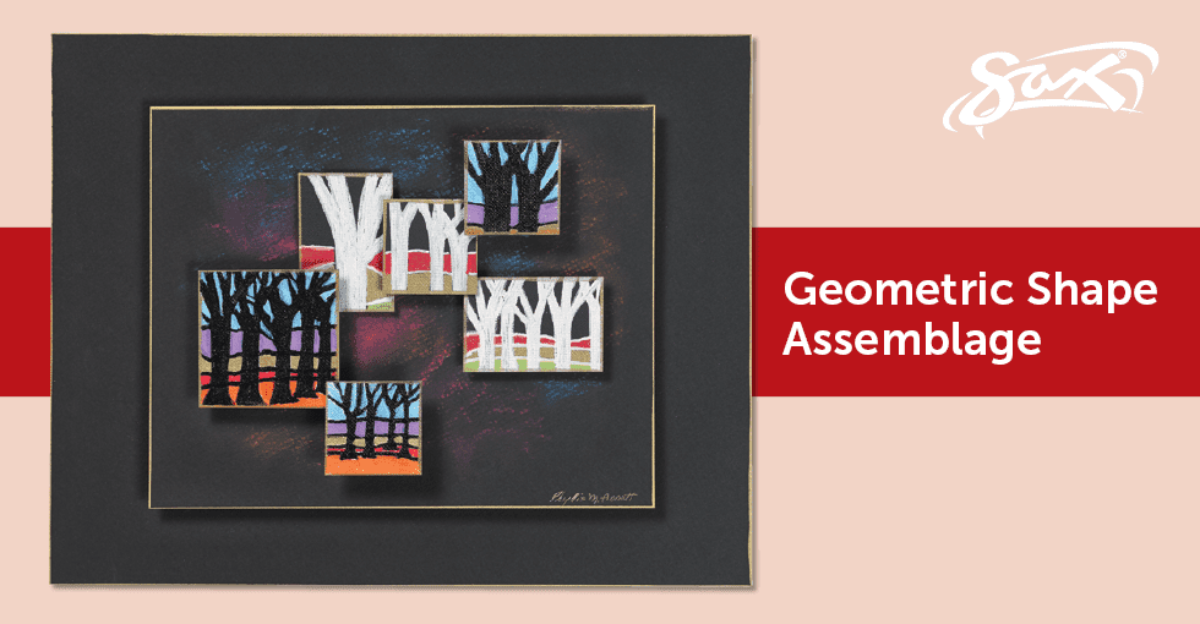Similar to its 2-D counterpart, collage, assemblage is the art of assembling different 3-dimensional pieces, often found objects, on a canvas or other background. An art unto itself, assemblage creations date as early as the early 1900s.
Some of the better known assemblage artists include Jean Dubuffet, whose work, titled “assemblages d’empreintes”, gave rise to the genre’s name. Marcel Duchamp, Vladimir Tatlin, and even Pablo Picasso, designed assemblage works with wire and metal scraps. American assemblage artist Louise Nevelson created assemblage pieces with a more natural feel, using found wood.
Your students can try their hands at the art of assemblage with our Geometric Shape Assemblage project, designed to help artists recognize and utilize the principles and elements of design and to understand the role each part plays in the overall theme of a piece.
First they’ll study patterns found in nature and symbols from other cultures, including the imprint of a wave on a sandy beach, the patterns in bark, animal fur, leaves, and flowers, and the patterns in textiles and weavings from other countries. Then they’ll design their own pattern, repeating it in various sizes and colors on geometric mini-canvases. Finally, they’ll mount the mini-canvases at varying levels, to create their own, 3-D assemblage project.
Download a complete lesson plan for this project, including images, step-by-step directions, and a materials list, today!
For Grades 6-12.






Leave a Reply